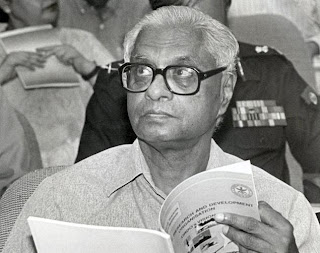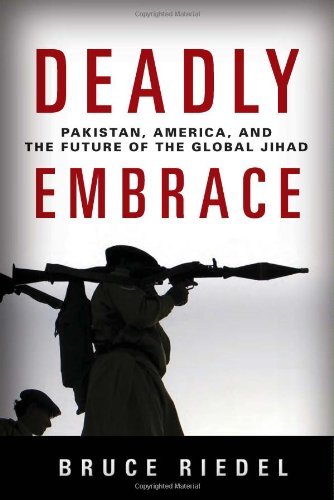The Kennedy Center’s mega-celebration of Indian culture – an extravaganza dubbed “Maximum India” – is now well underway, with sold-out performances and throngs of people in attendance. The three week long festival is the latest indicator of how decisively American perceptions about the country have changed. Not too long ago, India was regarded as the very epitome of what the term Third World meant – decrepit, destitute and pitiable. Yet in a relatively short period of time, the popular view of India changed in critical ways. Nowadays, it is broadly viewed as a fast-rising economic and technology powerhouse and home to a vast reservoir of highly-trained brainpower that will inevitably sap the U.S. edge in innovation. When President Obama points to Bangalore as a threat to America’s competitive advantage or invokes India as part of a new “Sputnik moment,” one quickly understands how far we have traveled from yesterday’s stereotypes.
Of course, a segment of U.S. opinion, attracted to Indian cultural traditions and the moral precepts of Mahatma Gandhi, has long held the country in high regard. But for many decades most Americans were inclined to the views of Harry S. Truman, who dismissed India as “pretty jammed with poor people and cows wandering around streets, witch doctors and people sitting on hot coals and bathing in the Ganges.” Truman’s Secretary of State, Dean Acheson, had an even more incisive perspective: “by and large [Indians] and their country give me the creeps.”
A decade after Indian independence, Harold Issacs’s classic 1958 survey of U.S. elite opinion, Scratches on Our Minds, revealed that influential Americans held very negative perceptions of the country, associating it with “filth, dirt and disease” along with debased religious beliefs. A State Department analysis prepared in the early 1970s found that U.S. public opinion identified India more than any other nation with such attributes as disease, death and illiteracy, and school textbooks throughout this period regularly portrayed it in a most negative light. This view was again underscored in a 1983 opinion poll, in which Americans ranked India at the bottom of a list of 22 countries on the basis of perceived importance to U.S. vital interests. A generation after Harold Issacs, the 1984 adventure film Indiana Jones and the Temple of Doom depicted India along essentially the same lines – as a country was filled with hapless, impoverished villagers and benighted religious practices.
Official attitudes in Washington tended to parallel public opinion. U.S. policymakers during the Cold War paid only episodic attention to New Delhi and when they did it was largely a function of the superpower rivalry with the Soviet Union rather a desire to meaningfully engage Indian leaders. The Kennedy administration placed considerable if anomalous emphasis on India, making a massive commitment of economic assistance. But by the end of the Johnson administration, leading Democrats grew fatigued with the country’s seemingly insuperable problems. As Dennis Kux notes in Estranged Democracies, his history of the bilateral relationship, by the late 1960s “India, in Washington’s eyes, had become just a big country full of poor people.” The Nixon administration similarly believed that India was not worthy of heavy engagement. President Nixon himself held denigrating views of Indians, seeing them as supine and indecisive, and regarded Prime Minister Indira Gandhi in an even worse light. When Daniel Patrick Moynihan was U.S. ambassador to India from 1973-75, he regularly lamented that Washington was utterly indifferent to the country’s fate; writing in his diary, he confided that it “is American practice to pay but little attention to India.” In a cable to the State Department, he complained of dismissive attitudes, “a kind of John Birch Society contempt for the views of raggedly ass people in pajamas on the other side of the world.”
So, what accounts for the significant shift in cultural perceptions that is increasingly registered in government statements – such as, President Obama’s calling India an “emerged” country and an “indispensable partner” – and in high-profile cultural events like the Kennedy Center’s? An obvious part of the answer lies in the dramatic turnabout in Indian prospects launched by the 1991 economic reforms. Long gone are the days when India was seen as an economic laggard or a marginal factor in global commerce. In a remarkable sign of changing fortunes, the New York Times “Room for Debate” blog in late 2010 convened seven experts for a discussion on which lessons in economic competitiveness the United States could learn from India. Along similar lines, Fareed Zakaria in Time magazine contrasted a dejected America with an India filled with people “brimming with hope and faith in the future,” while Thomas L. Friedman in the New York Times proclaimed that “It’s Morning in India.” And a new Citibank report concludes that India will likely be the world’s largest economic power by 2050.
But a less obvious, though equally important, factor is also at work: The increasing stature of Indians in American society has changed how all Americans think about India. Large-scale Indian migration to the United States did not begin until the late 1960s and though the community remains relatively small – less than one percent of the overall U.S. population – it is one of the country’s fastest-growing ethnic groups. But the community’s growing success has given it an influence and impact wholly disproportionate to its size. As one analyst puts it, “Indians in America are emerging as the new Jews: disproportionately well-educated, well paid, and increasingly well connected politically.”
According to a recent report by the RAND Corporation, Indian-American entrepreneurs have business income that is substantially higher than the national average and higher than any other immigrant group. High-skill immigrants from India are a significant driving force in U.S. prosperity and innovation, most famously in the information technology industry. As Vivek Wadhwa and his colleagues document, Indians stand out among immigrant entrepreneurs, having founded from 1995-2005 more U.S.-based engineering and technology companies in the past decade or so than immigrants from the United Kingdom, China, Taiwan and Japan combined. According to industry estimates, Indians are involved in 40 percent of all start-up ventures in Silicon Valley. India-born scientific and engineering talent is also an important pillar of the faculties in America’s top universities.
The rising profile of the Indian diaspora has helped change public opinion in relatively short order. For example, in contrast to the traditional sentiment of disdain or pity, a February 2010 Gallup survey found that two-thirds of Americans now have a positive impression of India, a favorability level equal to that of Israel. In my next post, I will explore further how this societal factor has contributed to the new era in U.S.-India relations and how policymakers in Washington and New Delhi can capitalize on it.




